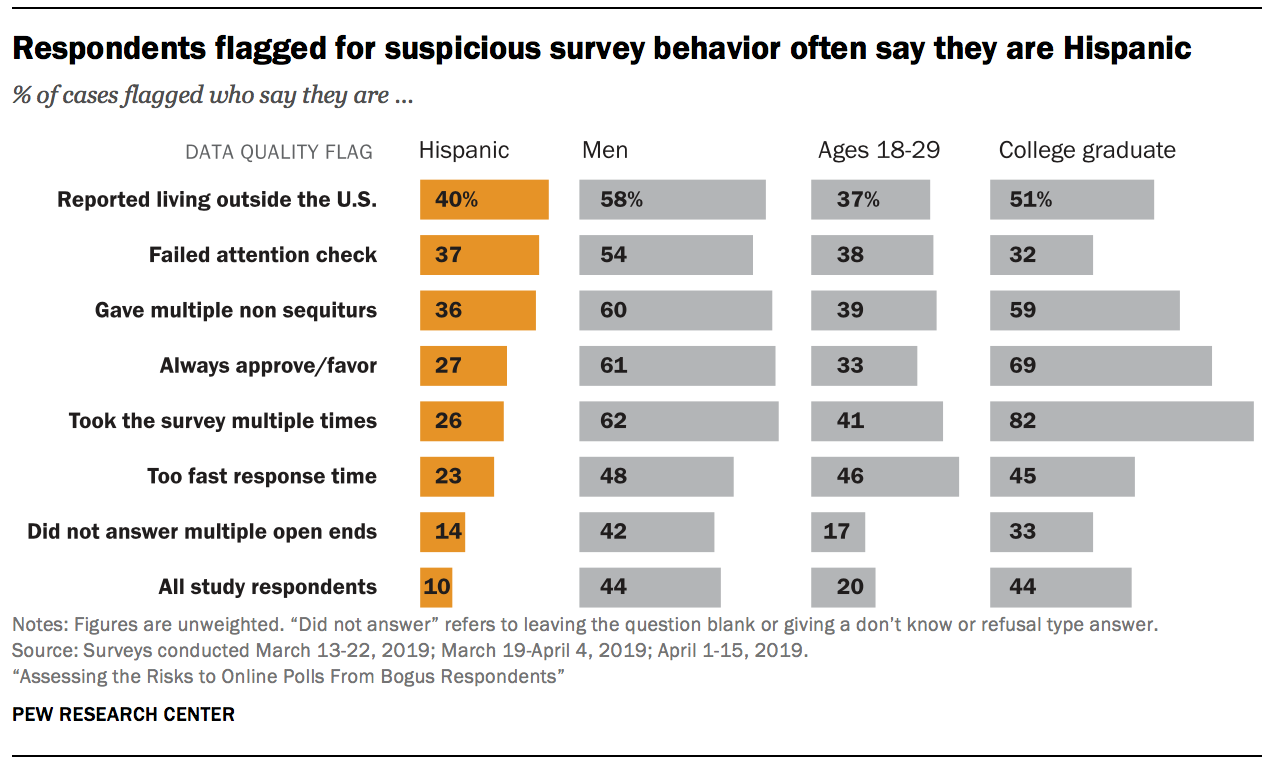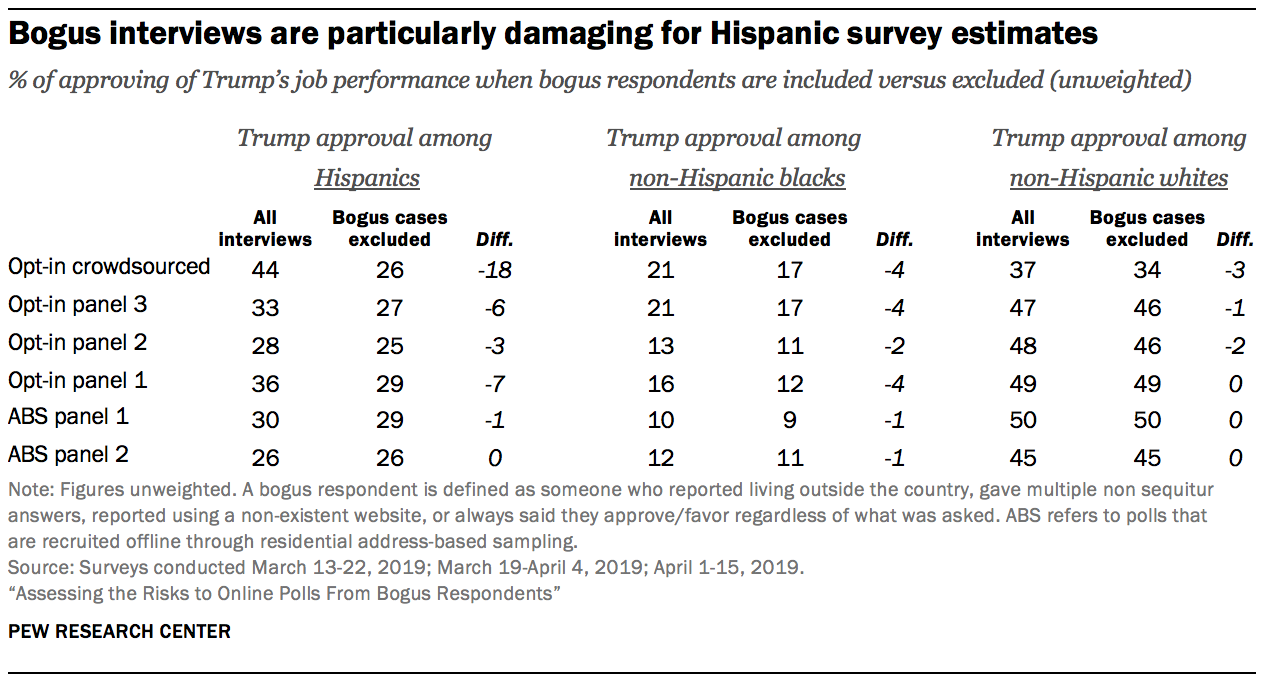Cases flagged for suspicious survey behavior have a very different demographic profile than nonsuspicious cases, based on respondents’ self-reported characteristics. In particular, respondents flagged for certain suspicious behaviors were quite likely to say they are Hispanic. The baseline rate of respondents in the study self-reporting as Hispanic is 10% (the actual population rate24 is 16%). However, 30% of those giving at least two non sequitur answers, taking the survey multiple times, always saying they approve/favor regardless of what was asked, or saying they currently live outside the U.S. said they were Hispanic.

While some share of these suspicious respondents could very well be Hispanic, this rate is likely inflated. Hispanic ethnicity was measured with a stand-alone yes/no question. Therefore, respondents answering at random would be expected to report “yes” at a higher rate than the true incidence.
Relative to the study respondents (and the population) as a whole, cases flagged for suspicious behavior skew male, young and educated. There is no obvious explanation why respondents would misreport those characteristics, but it is difficult to know if they should be taken at face value.
Respondents who decline to answer two or more of the open-ended questions exhibit none of those skews and in general look quite like the overall sample. This result underscores the fact that declining to answer some questions is very different from these other behaviors.
Bogus cases have a particularly large effect on estimates for Hispanic Americans
The fact that bogus cases are disproportionately likely to report being Hispanic means that the damage from bogus cases is particularly large for Hispanic estimates. For example, when looking at the opt-in panel polls, Trump’s job approval among non-Hispanic whites changes by one percentage point, on average, when bogus cases are removed. By contrast, his approval rating among Hispanics drops five percentage points on average when bogus cases are removed. The damage to the Hispanic estimate from the crowdsourced sample is far worse – an 18 percentage point change. Among the address-recruited online panel polls, none of the subgroup estimates changed by more than a percentage point.





